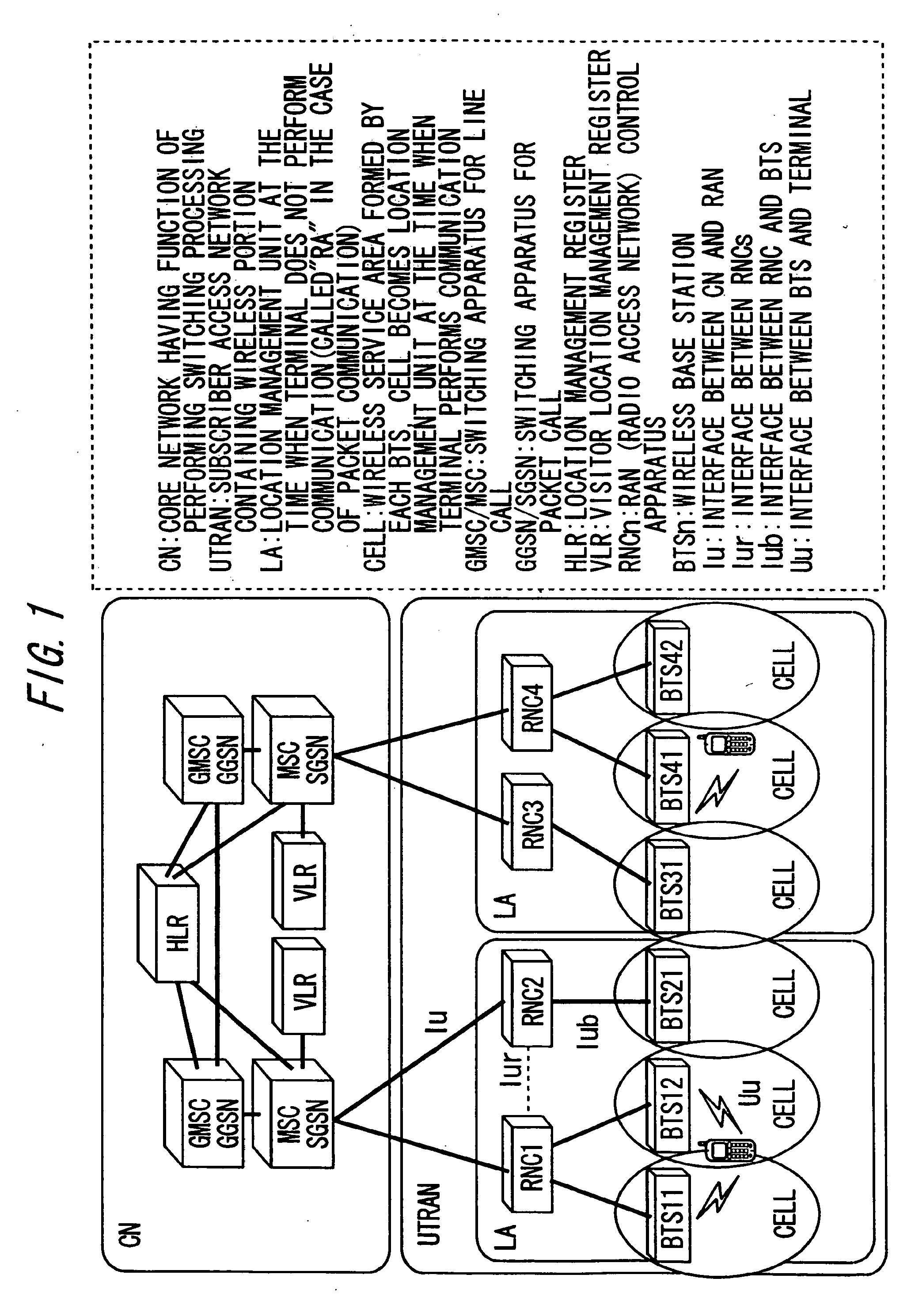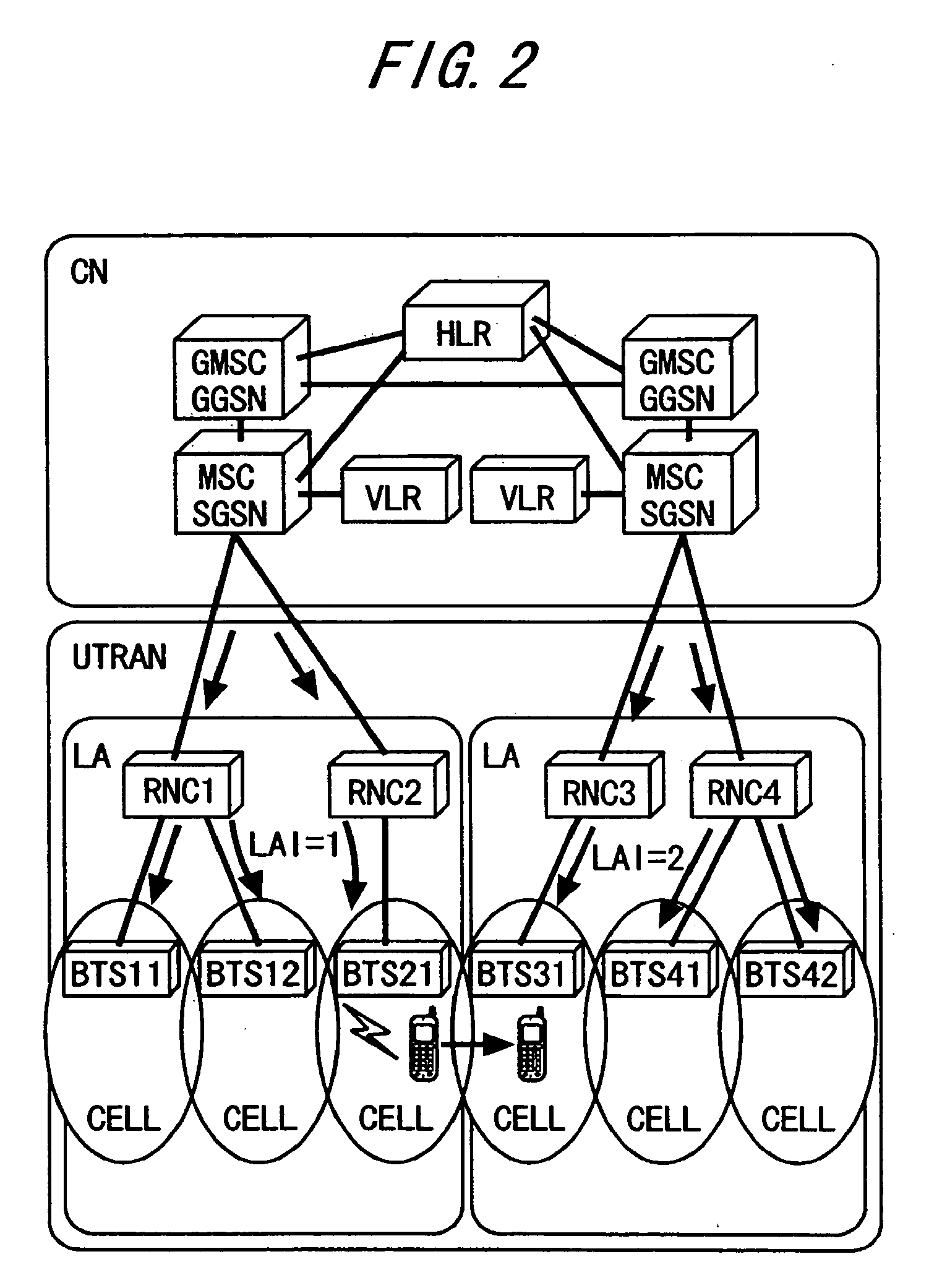Terminal state control system
a control system and terminal technology, applied in the field of network systems, can solve the problems of difficult to distinguish with ease, difficult to install many antennas in a narrow area, and difficult to install base stations of the imcs or the simple imcs described above only for the convenience of mobile telephone companies
- Summary
- Abstract
- Description
- Claims
- Application Information
AI Technical Summary
Benefits of technology
Problems solved by technology
Method used
Image
Examples
first embodiment
Mode
[0183]In order to achieve the present invention by making modifications to the mobile telephone service system described above, problems described below needs to be solved.
[First Problem]
[0184]A private-household-use (personal-use or home-use) base station system according to the present invention needs to make a judgment as to whether the provision of a service should be allowed (OK or NG) for each terminal in units of cells (in units of base stations). In order to make such a judgment, a registration list (registration table), in which identifiers for distinguishing among base stations (base station IDs such as Cell-IDs or BTS numbers) and the identification information (IDs) of terminals that are allowed to use the base stations are registered, needs to be provided somewhere in the base station system. Also, it is required to solve the following problems concerning the registration table:
[0185]How to prescribe the existing place of the registration table on the network side a...
ninth operation example
[0321]Next, as a ninth operation example, an operation in the case where the terminal A moves from a cell for which it is registered to a cell for which it is not registered (for instance, in the case where the terminal A moves from the cell of the NBTS 1 to the cell of the BTS 21 in FIG. 27: 3> in FIG. 27) will be described.
[0322]FIGS. 33 and 34 are each a sequence diagram showing a ninth operation example. The procedure and processing in this ninth operation example are completely the same as those in the third operation example shown in FIGS. 20 and 21, so that the description thereof will be omitted.
tenth operation example
[0323]Next, as a tenth operation example, an operation in the case where the terminal B moves from a cell based on a conventional system structure to a cell in which only terminals other than the terminal B are registered (for instance, in the case where the terminal B moves from the cell of the BTS 21 to the cell of the NBTS 1 in FIG. 27A: 4> in FIG. 27A) will be described. FIG. 35 is a sequence diagram showing the tenth operation example. The tenth operation example corresponds to the fourth operation example.
[0324]As can be seen from FIG. 35, this tenth operation example differs from the seventh operation example (case of the terminal A) in that the terminal B is not registered for the NBTS 1. Like in the seventh operation example, the NRNC 4 acquires the IMSI of the terminal B by transmitting “IDENTITY REQUEST” to the terminal B and checks whether a pair of the IMSI and the cell ID of the NBTS 1 are registered in the registration table 6.
[0325]In this case, the terminal B is not...
PUM
 Login to View More
Login to View More Abstract
Description
Claims
Application Information
 Login to View More
Login to View More - R&D
- Intellectual Property
- Life Sciences
- Materials
- Tech Scout
- Unparalleled Data Quality
- Higher Quality Content
- 60% Fewer Hallucinations
Browse by: Latest US Patents, China's latest patents, Technical Efficacy Thesaurus, Application Domain, Technology Topic, Popular Technical Reports.
© 2025 PatSnap. All rights reserved.Legal|Privacy policy|Modern Slavery Act Transparency Statement|Sitemap|About US| Contact US: help@patsnap.com



